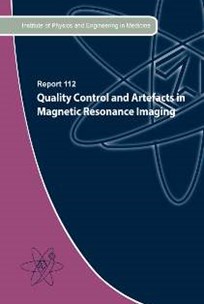
Report 112 Quality Control and Artefacts in Magnetic Resonance Imaging
Published Institute of Physics & Engineering In Medicine: 2017: IPEM Report Series
Quality Control and Artefacts in Magnetic Resonance Imaging (IPEM Report 112) is an authoritative, comprehensive and practical guide for all medical imaging professionals with an interest in evaluating and assuring image quality and scanner performance in MRI. Written by leading UK experts, the report is a major revision of IPEM Report 80: Quality Control in Magnetic Resonance Imaging. The report is two parts. Part I deals with quality control, with chapters on test object design and test materials, signal parameter measurement (signal-to-noise ratio, ghosting, etc.), geometric parameters (resolution, distortion), slice parameters (position, width and profile), relaxometry and contrast. For each parameter a consistent and systematic structure provides a literature review with reference to current international standards, parameter definition, description of test methods, practical guidance including frequency of measurement, analysis and interpretation of results, and pitfalls. A specialist QC chapter is a new and unique feature providing guidance relating to specific clinical and research techniques: field mapping, diffusion, BOLD fMRI, voxel-based morphometry, dynamic contrast-enhanced MRI, quantitative velocity mapping, spectroscopy, and ultra-high field MRI. Part II provides a comprehensive and exhaustive encyclopaedia of MRI artefacts both common and rare arising from technical limitations and faults, patient and organ motion, tissue properties, intrinsic MR physics, and reconstruction limitations. Pictorial examples of each artefact from clinical or phantom images are provided along with a detailed explanation of the causes and advice on reducing, avoiding or removing the artefact. A summary table of artefact appearance, causes and remediation will enable readers to diagnose and solve their own artefact problems. The practical nature of the report is underpinned by academic rigour with 269 references and a comprehensive index.